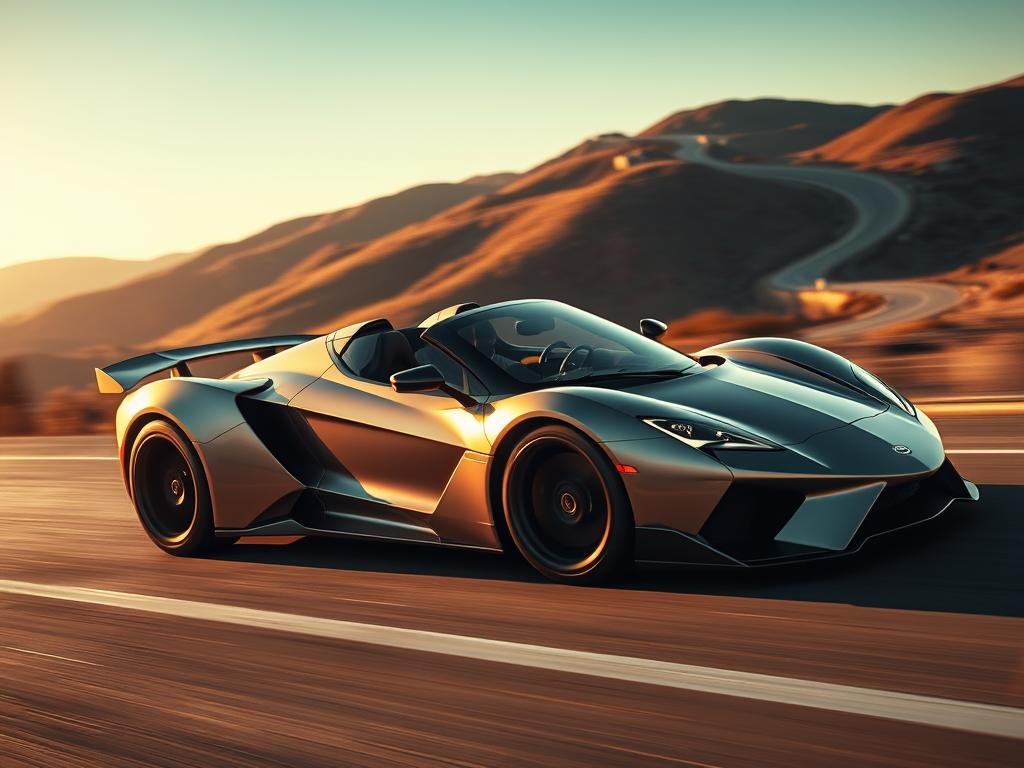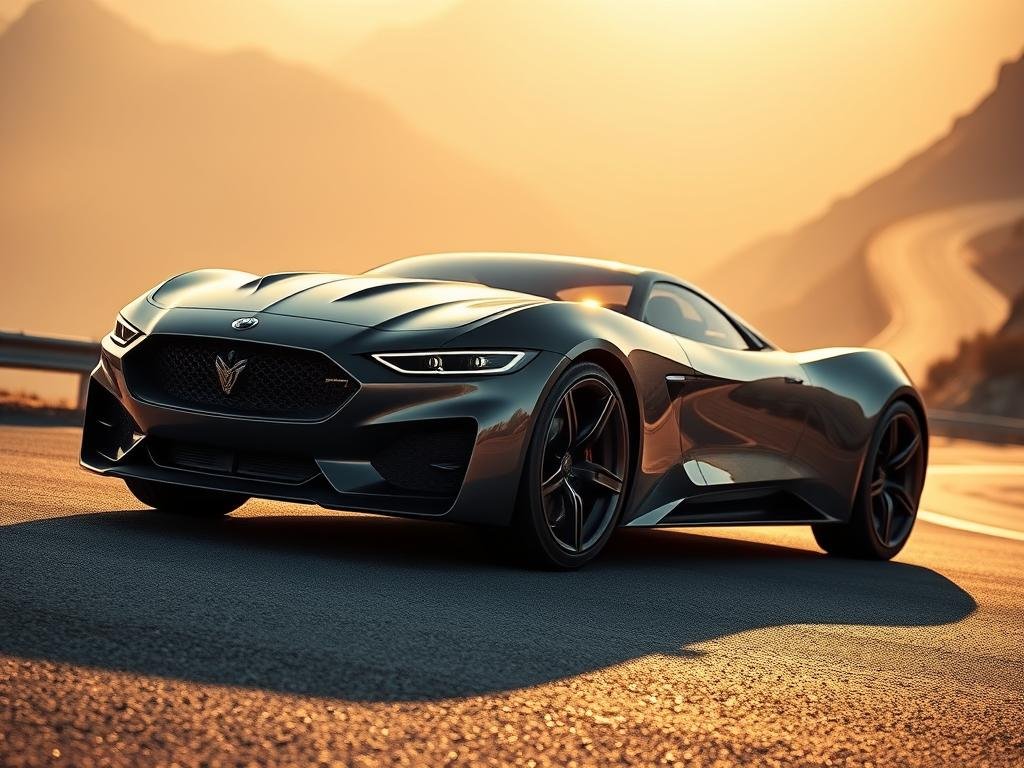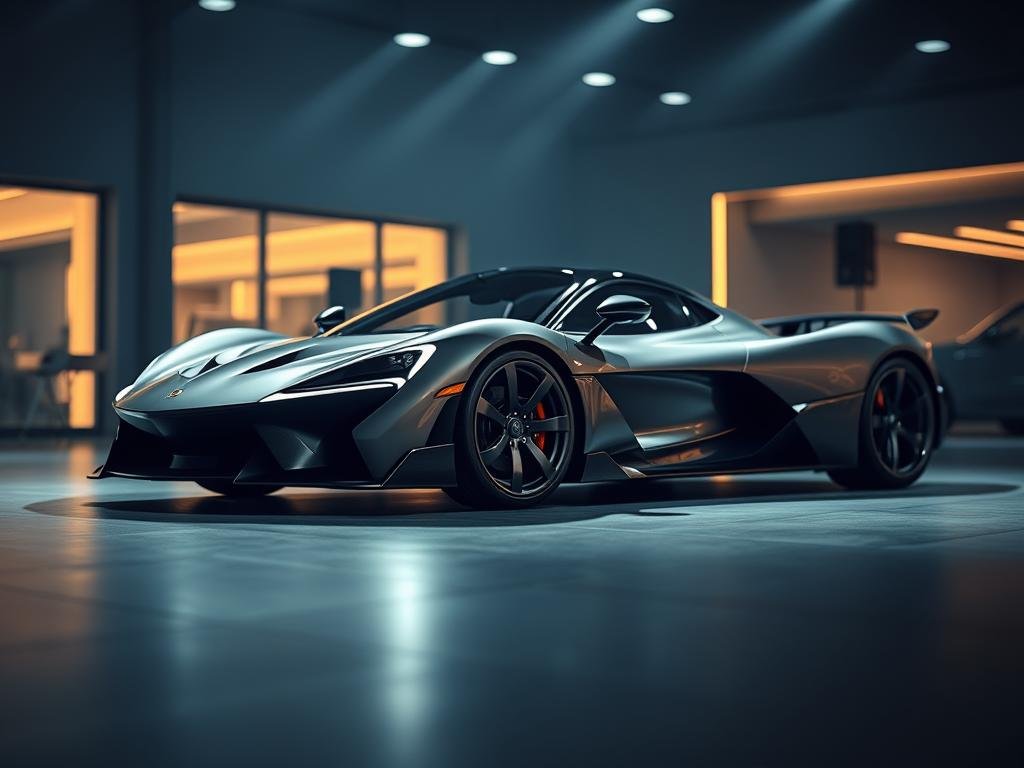
The Evolution of Sports Cars: Ever felt that rush of adrenaline when a sleek, powerful car zooms past? I remember my first encounter with a sport car—a Chevrolet Corvette—its roar echoing in my ears.
That moment sparked my fascination with these incredible machines. From their early days to today’s high-tech marvels, sport cars have always been about pushing limits.
In the 1920s, models like the Bugatti Type 35 set the stage with lightweight designs and impressive speed. Fast forward to the 1960s, and icons like the Ford Mustang and Porsche 911 redefined what a performance car could be.
Today, supercars like the McLaren Speedtail blend cutting-edge technology with jaw-dropping aesthetics.
What makes these vehicles so captivating? It’s the perfect mix of power, engine innovation, and timeless style. Whether it’s the thrill of racing or the allure of a muscle car, there’s something magical about these automobiles. Let’s dive into their fascinating history and see how they’ve shaped the car era we know today.
Origins of Speed: The Roaring ’20s
The 1920s were a decade where cars became more than just machines—they were statements of style. This era marked the beginning of a love affair with speed and design, even if horsepower was modest by today’s standards.
Automobiles like the Bentley 3 Litre and Stutz Series K showcased elegance, with their long hoods and luxurious leather seats.
Elegant Designs and Limited Horsepower
Back then, performance wasn’t about raw power. Most cars averaged 50-70 horsepower, a far cry from today’s supercars.
Yet, these vehicles were designed to turn heads. Their sleek bodies and innovative chassis laid the foundation for future racing legends. It was an era where style mattered as much as speed.
Pioneering Automakers and Their Innovations
Brands like Bentley, Stutz, and Bugatti led the charge. They introduced features that would shape the car era. For example, the Bugatti Type 35 combined lightweight construction with a powerful engine, setting new standards.
These manufacturers proved that even with limited horsepower, innovation could make a vehicle extraordinary.
| Model | Horsepower | Key Feature |
|---|---|---|
| Bentley 3 Litre | 70 | Luxurious leather seats |
| Stutz Series K | 60 | Innovative chassis design |
| Bugatti Type 35 | 90 | Lightweight construction |
These early models may not have been the fastest, but they captured the spirit of the times. They paved the way for the performance cars we admire today.
Looking back, it’s clear that the 1920s were the heart of a revolution—one that continues to inspire automobile enthusiasts around the world.
The Evolution of Sports Cars
Every decade has left its mark on the world of sport cars, shaping their identity and purpose. From the 1920s to today, these vehicles have transformed, blending design, power, and innovation.
Let’s explore how each era contributed to their legacy.
Decade-by-Decade Transformation
The 1960s introduced icons like the Ford Mustang and Porsche 911, redefining performance and style. By the 1980s, models like the Ford Capri showcased sleek curves and improved speed.
Fast forward to the 2000s, and supercars like the Toyota GR Supra combined cutting-edge engine technology with stunning aesthetics.

Each decade brought new ideas. The 1990s saw the rise of muscle cars, while the 2010s focused on hybrid designs and eco-friendly systems.
Today, manufacturers continue to push boundaries, creating cars that are faster, smarter, and more efficient.
Hybrid Designs and Averaged Performance
Modern sport cars blend classic design with futuristic elements. Take the Porsche 911, for example. Its iconic shape has evolved, but its heart remains the same—a powerful engine built for racing.
Performance figures tell a compelling story. In the 1970s, horsepower averaged around 150. Today, supercars like the Chevrolet Corvette boast over 600 horsepower.
This evolution reflects advancements in engine technology and design innovation.
From the Ford Mustang to the Toyota GR Supra, each model has contributed to the rich history of sport cars. Their journey is a testament to the perfect blend of art and engineering.
Revolution in Aerodynamics and Engine Efficiency
Aerodynamics and engine tech have reshaped the way we think about performance. From sleek bodies to turbocharged engines, these innovations have transformed how cars move and feel on the road.
Let’s dive into the breakthroughs that have made this possible.
Streamlined Bodies and Enhanced Stability
Streamlined designs have always been at the heart of speed. In the 1970s, models like the Lotus 79 used ground effects to create downforce without adding drag. This allowed for better grip and stability at high speeds.
Modern sport cars take this further. Advanced wind tunnel testing and computational fluid dynamics (CFD) help engineers perfect every curve. The result? Vehicles that slice through the air with minimal resistance.
Advances in Engine Technology
Engines have also seen incredible progress. Turbocharging and hybrid systems now deliver more power while improving fuel efficiency.
Take the Chevrolet Corvette—its latest engine combines raw horsepower with eco-friendly tech.
Racing has always driven these innovations. From F1 to Le Mans, the push for better performance has led to breakthroughs that trickle down to everyday cars. It’s a cycle of improvement that keeps the car era exciting.
American Muscle and European Roadsters
There’s something undeniably magnetic about the roar of a powerful engine. Whether it’s the raw muscle of an American classic or the refined elegance of a European roadster, these vehicles capture the imagination. Let’s explore the highlights of these two iconic styles.
Muscle Car Era Highlights
American muscle cars are all about power. Models like the Chevrolet Corvette and Ford Mustang defined an era with their bold designs and thunderous engines.
The Corvette, for instance, boasts a 6.2-liter V8 engine delivering over 600 horsepower—a testament to raw performance.
These cars weren’t just fast; they were cultural icons. The deep rumble of their engines became a symbol of freedom and rebellion. Even today, their influence is seen in modern supercars that push the limits of speed and design.
Sleek European Styling and Innovation
Across the Atlantic, European roadsters took a different approach. Brands like Porsche and Jaguar focused on agility and precision.
The Porsche 911, for example, combines a lightweight frame with a turbocharged engine, offering unmatched handling and performance.
These vehicles are a blend of art and engineering. Their sleek curves and aerodynamic designs make them as beautiful as they are fast.
The craftsmanship behind each model reflects a commitment to excellence that continues to inspire manufacturers worldwide.
Whether it’s the raw power of a muscle car or the refined elegance of a roadster, these vehicles remind us why we love sport cars. Their legacy lives on, shaping the future of automotive design and performance.
- 1:18 scale die-cast replica
- 3K Blue Glow with Silver Mach 1 stripes
- Detailed Engine
Racing Innovations and Homologation Specials
The thrill of the track often spills over into the streets. Racing has always been a testing ground for cutting-edge technology, and many of these innovations find their way into production cars.
This process, known as homologation, ensures that race cars meet road-legal standards while retaining their high-performance edge.
Race Car to Road-Legal Transformation
Homologation specials are unique vehicles built to comply with racing regulations. Manufacturers produce a limited number of road-legal versions to qualify their race cars for competition.
For example, the Peugeot 205 T16 was a rally legend that required 200 road-legal units to meet homologation rules. These cars often feature detuned engines and modified designs for everyday use.
One standout example is the Nissan Skyline GT-R. Its road version, the R32, had a detuned engine producing 300 horsepower, compared to the race car’s 400.
Despite this, it dominated the track, winning seven out of nine races in the 1991 Australian Touring Car Championship. This blend of performance and practicality makes homologation specials highly sought after.
Another iconic model is the Mitsubishi Pajero Evolution. Built for the Dakar Rally, it required 2,700 road-legal units.
Its success on the track, including back-to-back Dakar wins in 1997 and 1998, showcased the impact of racing technology on production vehicles.
These cars are more than just performance machines; they’re a testament to the ingenuity of manufacturers. From the Ford RS200 to the Lancia Stratos, homologation specials have left an indelible mark on the car era.
Their legacy continues to inspire modern supercars, proving that the heart of racing beats in every road-legal vehicle.
For a deeper dive into these iconic models, check out this collection of homologation specials. These cars are not just relics of the past; they’re a bridge between the track and the streets, shaping the future of automotive design and performance.
The Rise of Supercars and Hypercars
Pushing boundaries has always been the essence of automotive innovation. In recent years, supercars and hypercars have redefined what’s possible on the road.
These vehicles are not just about speed; they’re a blend of art, engineering, and pure adrenaline.

Record-Breaking Performance Figures
When it comes to performance, the numbers speak for themselves. The Bugatti Chiron set a new benchmark with a top speed of 304 mph.
This hypercar is powered by a quad-turbocharged W16 engine, delivering over 1,500 horsepower.
Another standout is the McLaren F1, which held the title of the fastest production car for over a decade. Its 6.1-liter V12 engine propelled it to 240 mph, a record that stood until the early 2000s.
Technological Advancements in Speed
Technology has played a huge role in achieving these milestones. Advanced aerodynamics and lightweight materials like carbon fiber have made these cars faster and more efficient.
The Koenigsegg Regera, for example, uses a hybrid system to combine raw power with eco-friendly innovation.
These advancements aren’t just for the track. They’re shaping the future of road cars, making high performance accessible to more drivers. From racing legends to modern marvels, the car era continues to evolve.
The Shift to Greener Power and Electrification
The future of high-performance vehicles is being reshaped by greener technologies. As the world moves toward sustainability, sport cars are embracing hybrid and electric systems.
These innovations are not just about reducing emissions; they’re about enhancing performance and redefining what’s possible on the road.
Hybrid Systems and Pure Electric Innovations
Hybrid systems are bridging the gap between traditional engines and electric power. Models like the McLaren Speedtail combine a combustion engine with an electric motor, delivering unmatched speed and efficiency.
This blend of technologies allows for faster acceleration while reducing fuel consumption.
Pure electric cars are also making waves. The Pininfarina Battista, for example, boasts over 1,900 horsepower and zero emissions.
These vehicles prove that sustainability and performance can go hand in hand. The shift to electric power is not just a trend; it’s the future of the car era.
Historical milestones like Camille Jenatzy’s first fully electric vehicle in 1899 paved the way for today’s innovations.
Modern manufacturers are building on this legacy, creating cars that are faster, cleaner, and more efficient. The result is a new generation of sport cars that are as exciting as they are eco-friendly.
I’m thrilled to see how zero-emission technology is shaping the future of automotive design. From hybrid systems to pure electric power, these advancements are transforming the way we think about speed and performance.
The road ahead is greener, faster, and more exhilarating than ever.
Modern Trends and Future of Sports Cars
Sleek lines and cutting-edge tech define today’s sport cars. From aerodynamic shapes to hybrid systems, these vehicles are more than just fast—they’re a blend of art and engineering. Let’s explore the trends shaping their future.
Current Design Aesthetics and Aerodynamic Trends
Modern cars focus on both beauty and function. Aerodynamics play a huge role in reducing drag and improving speed.
Models like the Pagani Huayra Imola showcase how curves and angles can enhance stability at high speeds.
Lightweight materials like carbon fiber are also key. They reduce weight without compromising strength. This allows for better performance and fuel efficiency. The result? Vehicles that are faster, safer, and more eco-friendly.
What’s Next in Performance and Innovation
The future of sport cars is electric. Hybrid and fully electric models are becoming more common. They offer incredible speed with zero emissions.
The Pininfarina Battista, for example, delivers over 1,900 horsepower while being environmentally friendly.
Advanced driver-assistance systems (ADAS) are also on the rise. These technologies enhance safety without taking away the thrill of driving. From augmented reality dashboards to customizable systems, the possibilities are endless.
I’m excited to see how these innovations will shape the next era of supercars. The blend of sustainability and performance is a game-changer. It’s a thrilling time to be a car enthusiast.
- Get ready for a great building project with this replica of the 1969 Chevrolet Camaro Z28, a LEGO Icons set for adults t…
- Build an American muscle car model in black, with silver alloys, detailed V8 engine, working steering wheel and opening …
- Easily customize this model car kit for adults with closed or convertible roof, classic or hideaway front headlights and…
Conclusion
From roaring engines to sleek designs, the journey of high-performance vehicles has been nothing short of extraordinary.
Over the past century, each decade brought innovations that redefined what a car could achieve. Iconic models like the Chevrolet Corvette and Ford Mustang set benchmarks in speed and design.
Today, supercars like the Bugatti Chiron push boundaries with record-breaking performance. Hybrid and electric systems are shaping the future, blending sustainability with raw power.
It’s an exciting era for enthusiasts and manufacturers alike.
Thank you for joining me on this journey through automotive history. Keep an eye on upcoming trends—innovation never stops in the world of high-performance vehicles.
FAQ
What defined sports cars in the 1920s?
In the 1920s, sports cars were known for their elegant designs and limited horsepower. Pioneering automakers like Bugatti and Alfa Romeo introduced innovations that set the stage for future performance vehicles.
How did sports cars evolve over the decades?
Sports cars transformed significantly each decade, blending hybrid designs with averaged performance. From the 1950s to the 2000s, advancements in technology and styling kept pushing boundaries.
What role did aerodynamics play in sports car development?
Aerodynamics revolutionized sports cars by introducing streamlined bodies and enhanced stability. These changes, paired with advances in engine technology, improved both speed and efficiency.
What made the muscle car era so iconic?
The muscle car era, led by models like the Ford Mustang and Chevrolet Corvette, was defined by raw power and bold styling. These vehicles became symbols of American automotive culture.
How did racing influence road-legal sports cars?
Racing innovations often trickled down to road-legal cars through homologation specials. This process transformed race cars into high-performance vehicles for everyday use.
What sets supercars and hypercars apart?
Supercars and hypercars are known for their record-breaking performance figures and cutting-edge technology. Brands like Ferrari and McLaren continue to push the limits of speed and design.
How are sports cars adapting to greener technologies?
Sports cars are embracing hybrid systems and pure electric innovations to reduce emissions. Models like the Porsche Taycan showcase how performance can meet sustainability.
What trends are shaping modern sports cars?
Modern sports cars focus on sleek design aesthetics and advanced aerodynamics. The future promises even greater innovation in performance and efficiency.



